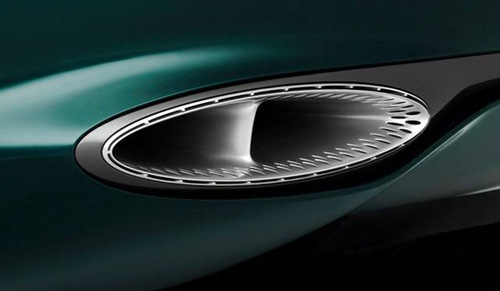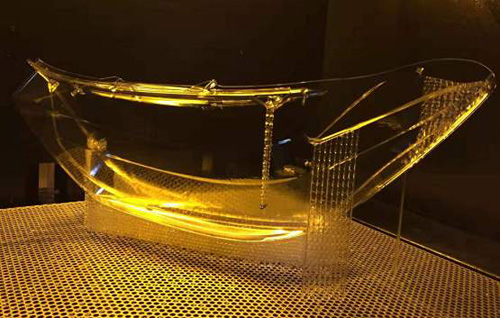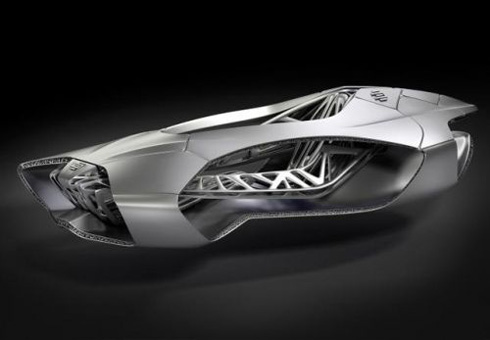As a significant symbol of the industry 4.0 era, the rapid development of 3D printing technology will undoubtedly provide better support for the development of the automotive industry. The current application of 3D printing technology in the automotive industry is no longer limited to simple conceptual model design. It is moving toward more functional components, infiltrating into various fields of automotive components. For example, car grilles, car dashboards, air conditioning ducts, intake manifolds, engine covers, decorative parts, and headlights have all been developed using 3D printing technology.
The development of automotive parts often requires long-term verification work. The traditional process is to design the pieces first, then develop the molds, then manufacture the parts and entities and test the parts entities to determine whether the product design requirements can be met. If the conditions are not met, the design or mold needs to be corrected. This process is time-consuming and costly.

Applying 3D printing technology to the development of automotive parts can quickly verify the working principle and feasibility of complex parts, which not only saves the process of mold development but also reduces time and capital investment. The development cycle of traditional auto parts is usually more than 45 days, and 3D printing can complete the development and verification process of parts in 1-7 days, which can significantly improve the research and development efficiency of new products. Moreover, no mold is required in the process of developing components for 3D printing, which can save a lot of costs.
At present, in the automotive application market, automobile brands that use Luentech's 3D printing technology include Volkswagen, Toyota, Jiangling, Jianghuai, BYD, Chery, etc., and the lamp manufacturers that specialize in using Luentech's 3D printing technology are: Zhejiang Tianzhu Light Group Co., Ltd., Jilin Ruibao Auto Lamp Co., Ltd., Tianjin Auto Lamp Factory, etc. Today, Xiaobian wants to share one of the sub-applications in the automotive field, 3D printing car lights.

The headlights are the lighting tools of the vehicle. They can be divided into two types according to the function: the lights and the signal lights. Car headlights are automotive exterior lights that are critical in the automotive industry. The requirements for materials are like most light sources, and they must be highly transparent and allow the driver to travel far away on the road. It can be seen that the real transparency of the lampshade parts is relatively high. Luentech's light-curing and high-transparency 3D printing materials can meet the high transparency requirements of automobile lamps. After post-processing polishing, the effect can be comparable to PMMA materials, which is suitable for visual verification. , assembly verification. Also, the unique properties of the photosensitive resin material apply to the spraying and electroplating processes for components inside the automobile headlights.
The advantage of adopting 3D printing technology in the R&D trial production process is that the mold opening process in the traditional automobile R&D trial production process is omitted, and the details of the appearance structure and texture of the product are realized in one place, which satisfies the product appearance verification, assembly verification and simplification. Manufacturing process, reducing labor intensity, it can be said that 3D printing provides the perfect solution for the trial production of car lights.

The development cycle of automobiles is long, but in the face of fierce competition in the automotive market, such a long time may cause significant harm to automobile manufacturers. Therefore, major car companies are trying to shorten the car development cycle. The long-term development cycle of automobiles is due to the long processing cycle of auto parts and the high cost of design and development of auto parts. These shortcomings have limited the development of the automotive industry. The advantages of 3D printing technology can make automotive R&D trials out of the traditional manufacturing dependence on molds. These advantages play an essential role in the automotive industry, and the application of 3D printing technology in the automotive industry is becoming more widespread.
TRUNNANO (aka. Luoyang Kmpass Nano Technology Co. Ltd.) is a trusted global chemical material supplier & manufacturer with over 12 years’ experience in providing super high quality chemicals and Nano materials. The 3D printing metal powder produced by our company has high purity, fine particle size and impurity content. Lower, please contact us if necessary.



